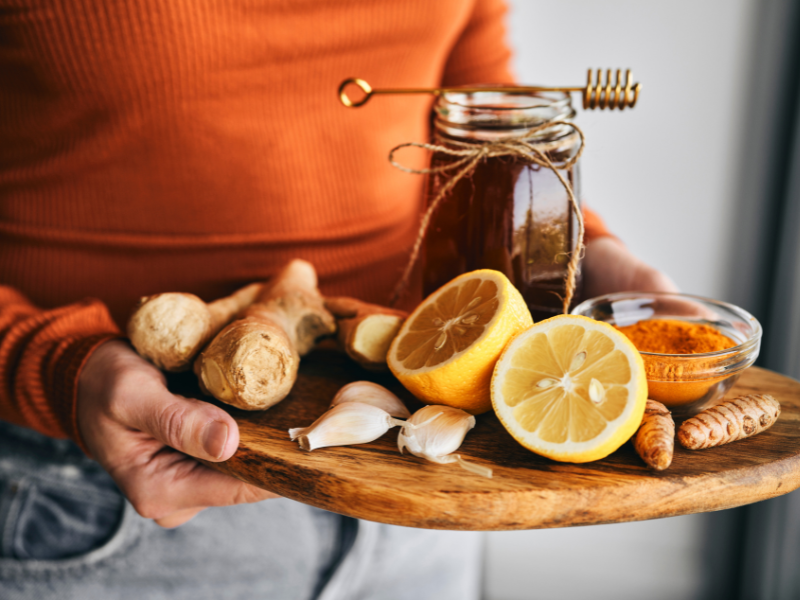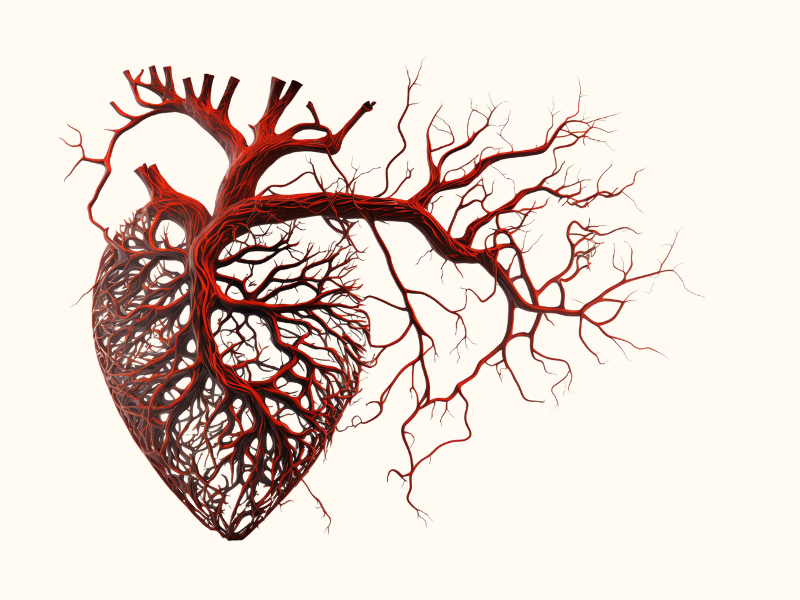19/12/2023
Your Guide to the Top Antioxidants
Certain enzymes, such as glutathione peroxidase, superoxide dismutase, and catalase, play a role as antioxidants. These enzymes contain metals like selenium and zinc.
This blog gives a rundown of some of the main antioxidants you need to know about. Here you can learn as much as possible about these powerful nutrients.
What are Antioxidants Good for?
The importance of fighting off free radicals
Free radicals molecules are missing an electron from their outer shell. That makes them unstable, so they go and steal an electron from the molecules in your skin cells, or from your blood cells, or from wherever they can.
The body generates free radicals in response to environmental insults, such as tobacco smoke, ultraviolet rays, and air pollution, but they are also a natural byproduct of normal processes in cells.
Too many free radicals create oxidative stress — cells get damaged and even die. When your body is experiencing oxidative stress, we find signs of aging and disease.
The body's own defence mechanism
Thankfully our body has its defense mechanism; antioxidants. When free radicals don’t have antioxidants to keep them in check, they go wild.
An antioxidant is a general term for any compound that can counteract these unstable free radical molecules that damage DNA, cell membranes, and other parts of cells.
How Many Antioxidants are There?
There are possibly thousands of different compounds with antioxidant properties.
Popular examples include
- Vitamin C
- Vitamin E
- Zinc
- Beta-carotene and related carotenoids
- Minerals like selenium and manganese
Additionally there are antioxidants like glutathione, coenzyme Q10, lipoic acid, flavonoids, phenols, polyphenols, phytoestrogens, and many more, most of which occur naturally in food and help prevent oxidation or protect against environmental factors.
Glutathione
Cysteine, a sulfur-related antioxidant, is a vital component of glutathione, a major antioxidant protecting organs like the liver, kidneys, blood cells, and lungs. (1)
Prolonged oxidative stress, often intensified by factors like drug and alcohol abuse, can deplete glutathione, leaving cells susceptible to damage. Maintaining healthy levels is essential for protecting against diseases and keeping cells healthy.
Glutathione is a powerful molecule naturally made by your body, comprising three amino acids. It's present in every cell, acting as the main detoxifier, especially in the liver, and a potent antioxidant, safeguarding cells from damage.
This superhero molecule boosts your immune system and neutralizes harmful free radicals, with foods like avocados being excellent sources. However, glutathione levels decrease with age, increasing vulnerability to oxidative damage.
Adding NAC (N-acetyl-L-cysteine), a modified amino acid, can help boost your glutathione levels, fortifying your body's defenses and ensuring continued cellular health. Keep your glutathione levels up to keep your body strong and protected!
Alpha Lipoic Acid
Lipoic acid, another sulfur-related antioxidant, stands out for scavenging both water- and fat-type radicals. (2) Studies show its effectiveness in reducing oxidative stress markers.
Known for benefits against diabetes, lipoic acid has been used to manage diabetic neuropathy and protect eyes. It can even help prevent diabetes, demonstrating its versatility. (3-6) As we age, glutathione levels decline, influenced by genetic factors. (7,8)
Supplemental lipoic acid not only reverses this decline, safeguarding the heart and brain, but also reactivates aging genes. (7-9) Combined with L-carnitine, lipoic acid forms a potent antidote to age-related antioxidant and energy loss, synergistically enhancing mitochondrial function. (10-11)
Alpha Lipoic Acid is known as the universal antioxidant. Alpha-lipoic acid works well because it can dissolve in both fat and water, making it a potent antioxidant. The benefits of this antioxidant include:
- Boosting glutathione levels
- Providing strong antioxidant benefits
- Supporting the liver and nerves
- Helping control blood sugar
- Preventing LDL cholesterol damage
R-Lipoic Acid is the purest and most biologically active form of alpha-lipoic acid. Its unique structure allows it to easily cross the blood-brain barrier and reach vital organs, enhancing its potential benefits.
Ginkgo Biloba
Ginkgo Biloba, a particularly important plant antioxidant, combats oxidative stress in the brain with its rich flavonoids and metal chelators. These enhance cellular defenses.
It promotes neuroprotection by reducing inflammation, (12) improving circulation, preventing harmful amyloid build-up, and maintaining neurotransmitter balance.
Crucially, it safeguards mitochondria, our cellular powerhouses, from damage. In turn it supports brain health and function (13), particularly against disorders like Alzheimer's.
Curcumin
Curcumin, the critical compound in turmeric, is a key antioxidant with significant anti-inflammatory effects. (14) It actively scavenges harmful free radicals, boosts lipid protection, and enhances antioxidant defenses by activating pathways like Nrf2.
Research highlights its ability to shield vital brain cells from oxidative stress (15-17) and inflammation, contributing to its potential as a treatment for Alzheimer’s and other neurodegenerative disorders like Parkinson’s and Huntington’s.
Beyond its antioxidant properties, curcumin shows promise in:
- Reducing anxiety and depression (18)
- Improving brain health after injuries (19-21)
- Enhancing memory and learning (22)
This powerful component of turmeric isn't just a spice for flavor but a powerful agent for brain and overall health.
COQ10
Coenzyme Q10 (CoQ10) stands out as a first-line antioxidant, crucial for reducing oxidative stress and supporting cardiovascular health. This essential nutrient plays a pivotal role in energizing cells and has shown promise in protecting against neurodegenerative diseases like Alzheimer’s and Parkinson’s.
Clinical trials highlight its ability to lower inflammation, improve blood sugar control, and enhance liver function. The benefits extend to reducing skin wrinkles, promoting kidney health, and boosting lung function.
Traditionally available as ubiquinone, CoQ10 is now also found in the more bioavailable, absorbable form of ubiquinol, offering enhanced benefits, particularly for those with congestive heart failure.
Resveratrol
Resveratrol is a polyphenol (type of antioxidant) compound, that is found in several plants, most notably red grapes, some berries, and Japanese knotweed.
In its free form, resveratrol has poor bioavailability. Most of the free resveratrol does not end up in the bloodstream and cannot get to the tissues where it can exert beneficial effects. The main reason is that active resveratrol is rapidly metabolized. (23-25)
It has been shown in a number of different models to promote longevity, and has been studied for improving metabolic, cardiovascular, brain, and immune health.
Astaxanthin
Astaxanthin is a carotenoid pigment with powerful antioxidant and anti-inflammatory properties. It is probably the strongest out there. It has been recently acclaimed as a protector for the skin. (26)
The best way to take astaxanthin is in combination with phospholipids, which makes it far more bioavailable (absorbable). It is a caroteinouid, which is present in yeast, crayfish and salmon.
Recent research has shown that ithelps protect the heart and prevent against heart disease. (27) Astaxanthin also supports healthy glucose metabolism. (28)
Melatonin
Since its discovery over 50 years ago, melatonin has demonstrated itself as a functionally diverse molecule, with its antioxidant properties being amongst its most well-studied attributes. (29,30)
In fact, melatonin has been found to possess 200% more antioxidant power than vitamin E. Melatonin is found to be superior to glutathione as well as vitamins C and E in reducing oxidative damage. (31)
As such a potent antioxidant, melatonin plays a powerful role in fighting free-radical-related diseases — from cardiovascular disease to cancer and practically everything in between.
Read More Blog Posts
- Astaxanthin: A Natural Remedy for Radiant Skin
- It's all About Essential Amino Acids
- Stimulating Skin Health Starting from Within
- See all the Blog Posts
References
- Comhair SA, Erzurum SC. The regulation and role of extracellular glutathione peroxidase. Antioxid Redox Signal. 2005 Jan-Feb;7(1-2):72-9.
- Marangon K, Devaraj S, Tirosh O, Packer L, Jialal I. Comparison of the effect of alpha-lipoic acid and alpha-tocopherol supplementation on measures of oxidative stress. Free Radic Biol Med. 1999 Nov;27(9-10):1114-21.
- Ziegler D, Nowak H, Kempler P, Vargha P, Low PA. Treatment of symptomatic diabetic polyneuropathy with the antioxidant alpha-lipoic acid: a meta-analysis. Diabet Med. 2004 Feb;21(2):114-21.
- Kowluru RA, Odenbach S. Effect of long-term administration of alpha-lipoic acid on retinal capillary cell death and the development of retinopathy in diabetic rats. Diabetes. 2004 Dec;53(12):3233-8.
- Hahm JR, Kim BJ, Kim KW. Clinical experience with thioctacid (thioctic acid) in the treatment of distal symmetric polyneuropathy in Korean diabetic patients. J Diabetes Complications. 2004 Mar-Apr;18(2):79-85.
- Song KH, Lee WJ, Koh JM, et al. Alpha-lipoic acid prevents diabetes mellitus in diabetes-prone obese rats. Biochem Biophys Res Commun. 2005 Jan 7;326(1):197-202.
- Suh JH, Wang H, Liu RM, Liu J, Hagen TM. (R)-alpha-lipoic acid reverses the age-related loss in GSH redox status in post-mitotic tissues: evidence for increased cysteine requirement for GSH synthesis. Arch Biochem Biophys. 2004 Mar 1;423(1):126-35.
- Suh JH, Shenvi SV, Dixon BM, et al. Decline in transcriptional activity of Nrf2 causes age-related loss of glutathione synthesis, which is reversible with lipoic acid. Natl Acad Sci USA. 2004 Mar 9;101(10):3381-6.
- Smith AR, Shenvi SV, Widlansky M, Suh JH, Hagen TM. Lipoic acid as a potential therapy for chronic diseases associated with oxidative stress. Curr Med Chem. 2004 May;11(9):1135-46.
- Kumaran S, Savitha S, Anusuya DM, Panneerselvam C. L-carnitine and DL-alpha-lipoic acid reverse the age-related deficit in glutathione redox state in skeletal muscle and heart tissues. Mech Ageing Dev. 2004 Jul;125(7):507-12.
- Richardson MA. Research of complimentary/alternative medicine therapies in oncology: promising but challenging. J Clin Oncol. 1999 Nov;17(11 Suppl):38-43.
- Kim M-S, Bang JH, Lee J, Han J-S, Baik TG, Jeon WK. Ginkgo biloba L. extract protects against chronic cerebral hypoperfusion by modulating neuroinflammation and the cholinergic system. Phytomedicine 2016; 23(12):1356-64.
- Sastre J, Millan A, de la Asuncion JG, et al. A Ginkgo biloba extract (EGb 761) prevents cmitochondrial aging by protecting against oxidative stress. Free Radic Biol Med 1998:24(2):298-304.
- Hewlings SJ, Kalman DS. Curcumin: a review of its effects on human health. Foods 2017;6(10):92.
- Parada E, Buendia I, Navarro E, Avendano C, Egea J, Lopez MG. Microglial HO-1 induction by curcumin provides antioxidant, antineuroinflammatory, and glioprotective effects. Mol Nutr Food Res 2015;59(9):1690-700.
- Mukhopadhyay C, Ruidas B, Chaudhury S. Role of curcumin in treatment of Alzheimer’s disease. Int J Neurorehabil 2017:4:3.
- Brondino N, Fusar-Poli L, Panisi C, Politi P. Potential neuroprotective effects of curcumin against dementia. In: Neuroprotective effects of phytochemical in neurological disorders. Hoboken, New Jersey: John Wiley & Sons, Inc; 2017. P. 435-46.
- Chimakurthy J, Talasila M. Effects of curcumin on pentylenetetrazole-induced anxiety-like behaviors and associated changes in cognition and monoamine levels. Psychol Neurosci 2010;3(2):267-76.
- Huang L, Chen C, Zhang X, Li X, Chen Z, Yang C, et al. Neuroprotective effect of curcumin against cerebral ischemia-reperfusion via mediating autophagy and inflammation. J Mol Neurosci 2018:64(1):129-39.
- Dai W, Wang H, Fang J, Zhu Y, Zhou J, Wang X, et al. Curcumin provides neuroprotection in model of traumatic brain injury via the Nrf2-ARE signaling pathway. Brain Res Bull 2018;346:28-36.
- Zhu X, Li Q, Chang R, Yang D, Song Z, Guo Q, et al. Curcumin alleviates neuropathic pain by inhibiting p300/CBP histone acetyltransferase activity-regulated expression of BDNF and cox-2 in a rat model. PLoS One 2014;9.
- Nam SM, Choi JH, Yoo DY, Kim W, Jung HY, Kim JW, et al. Effects of curcumin (Curcuma longa) on learning and spatial memory as well as cell proliferation and neuroblast differentiation in adult and aged mice by upregulating brain-derived neurotrophic factor and CREB signaling. J Med Food 2014;17:641-9.
- Joseph A, Balakrishnan A, Shanmughan P, et al. Micelle/Hydrogel Composite as a “Natural Self-Emulsifying Reversible Hybrid Hydrogel (N’SERH)” Enhances the Oral Bioavailability of Free (Unconjugated) Resveratrol. ACS Omega. 2022 Apr 19;7(15):12835-45.
- Sandhir R, Singhal N, Garg P. Increasing resveratrol bioavailability: A therapeutic challenge focusing on the mitochondria. In: de Oliveira MR, ed. Mitochondrial Dysfunction and Nanotherapeutics: Elsevier; 2021:349-84.
- Walle T. Bioavailability of resveratrol. Ann N Y Acad Sci. 2011 Jan;1215:9-15.
- Davinelli S, Nielsen ME, Scapagnini G. Astaxanthin in Skin Health, Repair, and Disease: A Comprehensive Review. Nutrients. 2018 Apr 22;10(4).
- https://www.lifeextension.com/magazine/2021/2/astaxanthin-heart-health
- Mashhadi NS, Zakerkish M, Mohammadiasl J, et al. Astaxanthin improves glucose metabolism and reduces blood pressure in patients with type 2 diabetes mellitus. Asia Pac J Clin Nutr. 2018;27(2):341-6
- Reiter RJ, Tan DX, Fuentes-Broto L. Melatonin: a multitasking molecule. Prog Brain Res. 2010;181:127-51.
- Stetinová V, Smetanová L, Grossmann V, Anzenbacher P. In vitro and in vivo assessment of the antioxidant activity of melatonin and related indole derivatives. Gen Physiol Biophys. 2002 Jun;21(2):153-62.
- Reiter RJ, Paredes SD, Korkmaz A, Jou MJ, Tan DX. Melatonin combats molecular terrorism at the mitochondrial level. Interdiscip Toxicol. 2008 Sep;1(2):137-49.







